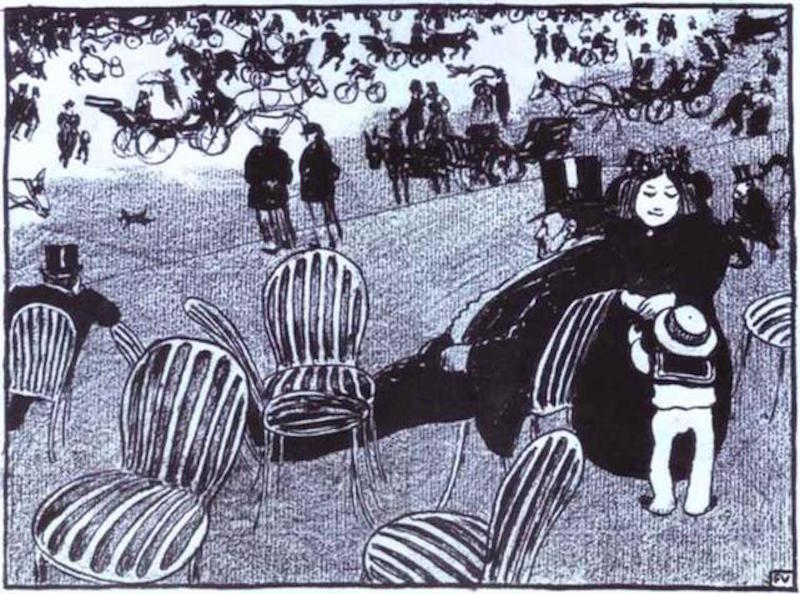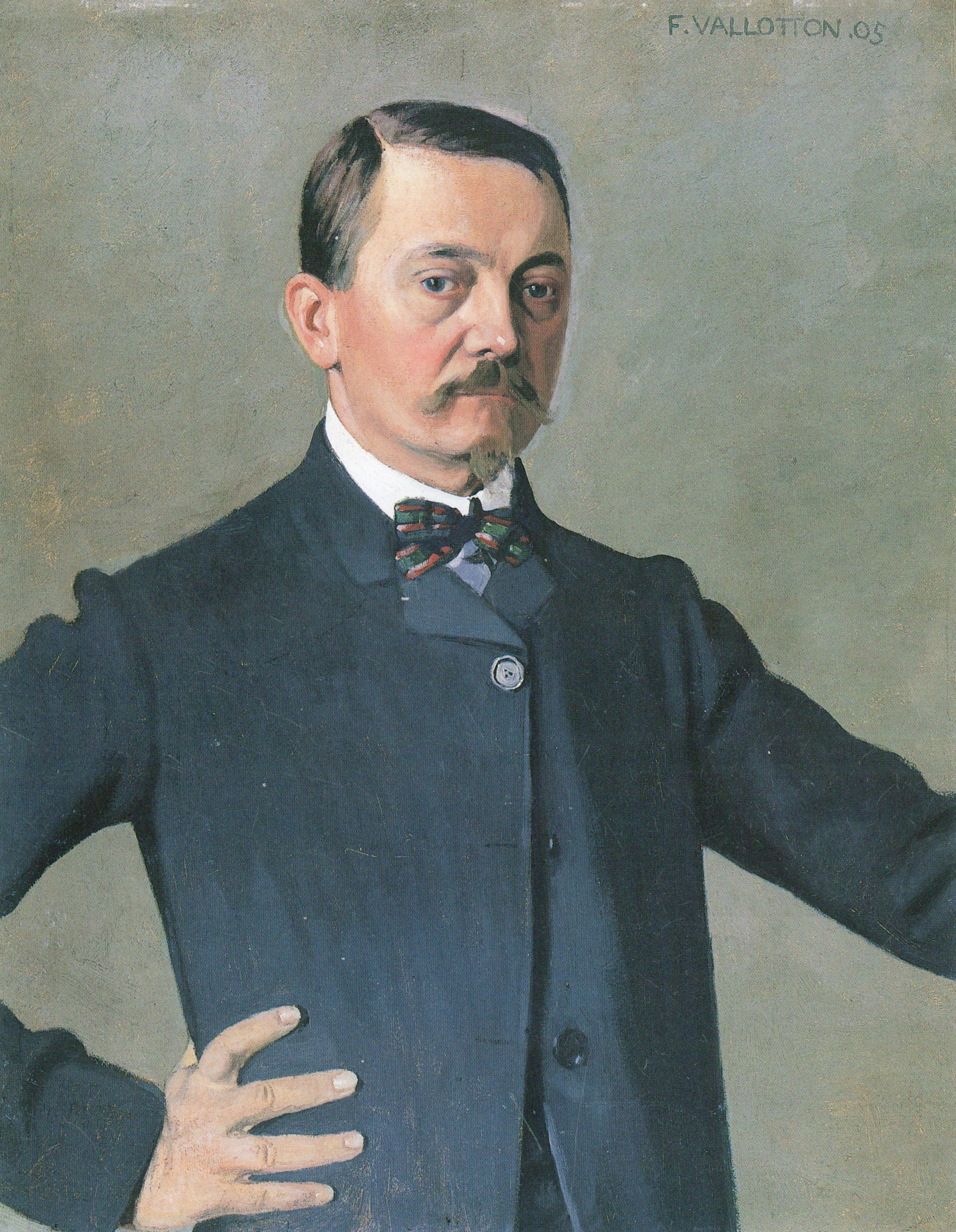Vallotton's woodcut subjects included domestic scenes, bathing women, portrait heads, and several images of street crowds and demonstrations—notably, several scenes of the police attacking anarchists. He usually depicted types rather than individuals, eschewed the expression of strong emotion, and as art historian, Sasha Newman wrote, "fuse[d] a graphic wit with an acerbic if not ironic humour".
Vallotton's graphic art reached its highest development in his Intimités (Intimacies). These were a series of ten interiors published in 1898 by the Revue Blanche, which dealt with the tension between men and women. Vallotton's woodcuts were widely disseminated in periodicals and books in Europe as well as in the United States and have been suggested as a significant influence on the graphic art of Edvard Munch, Aubrey Beardsley, and Ernst Ludwig Kirchner.
By 1892 he was affiliated with Les Nabis, a group of young artists that included Pierre Bonnard, Ker-Xavier Roussel, Maurice Denis, and Édouard Vuillard, with whom Vallotton was to form a lifelong friendship. During the 1890s, when Vallotton was closely allied with the avant-garde, his paintings reflected the style of his woodcuts, with flat areas of colour, hard edges, and simplification of detail. His subjects included genre scenes, portraits and nudes. Examples of his Nabi style are the deliberately awkward Bathers on a Summer Evening (1892–93), now in the Kunsthaus Zürich, and the symbolist Moonlight (1895), in the Musée d'Orsay.


 Félix Vallotton
Félix Vallotton